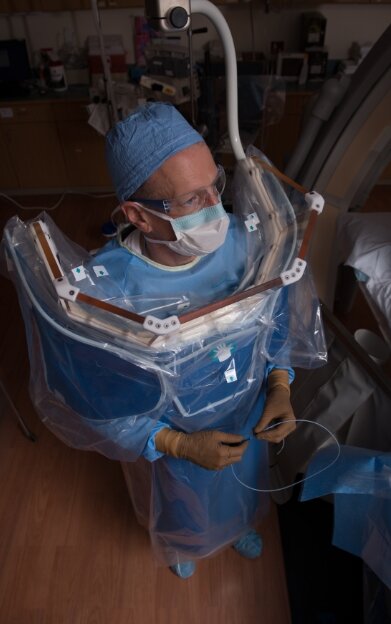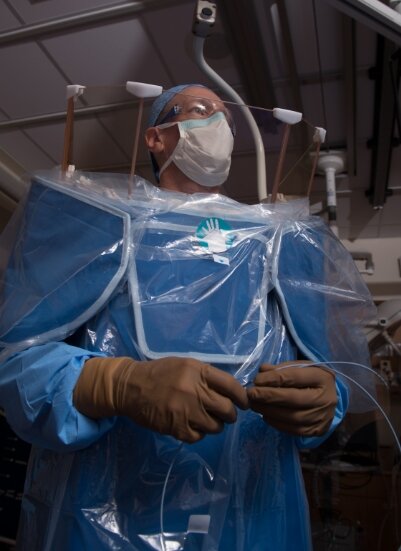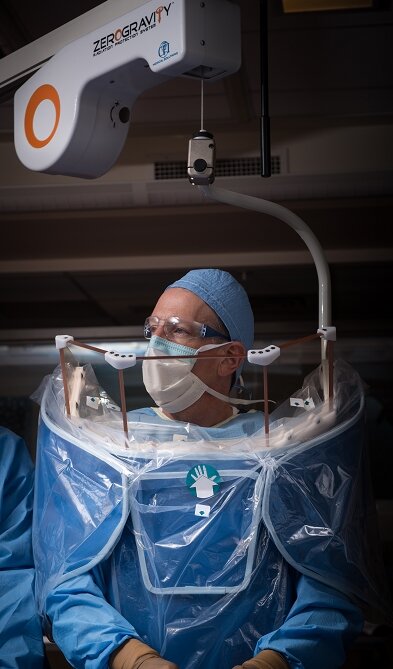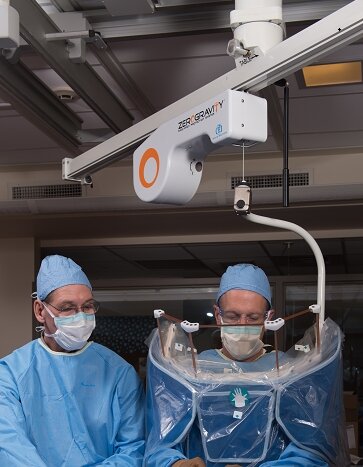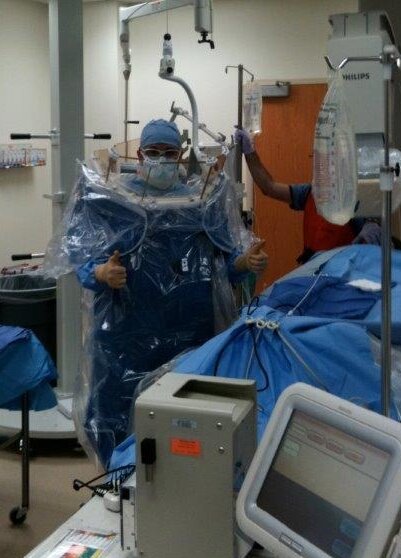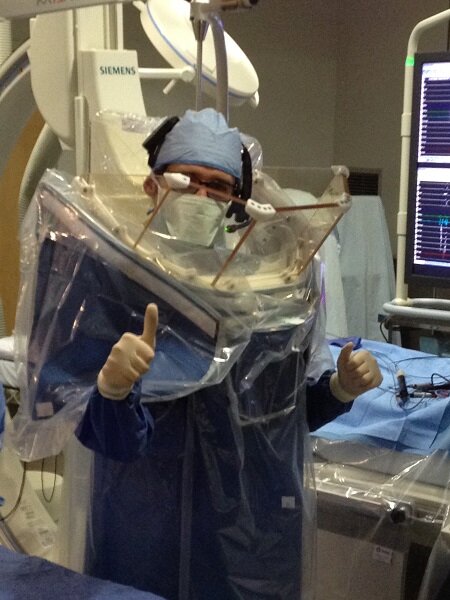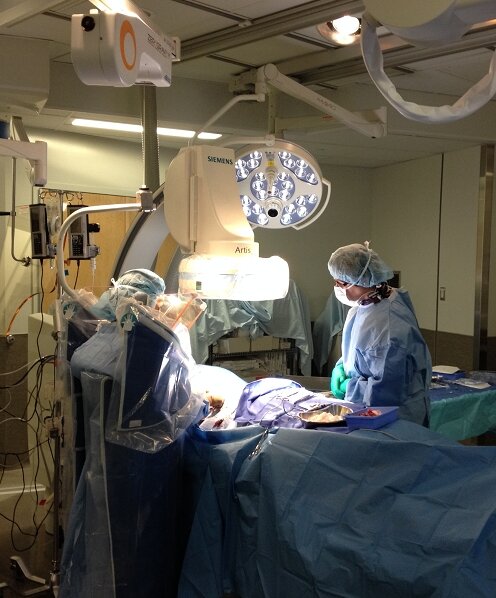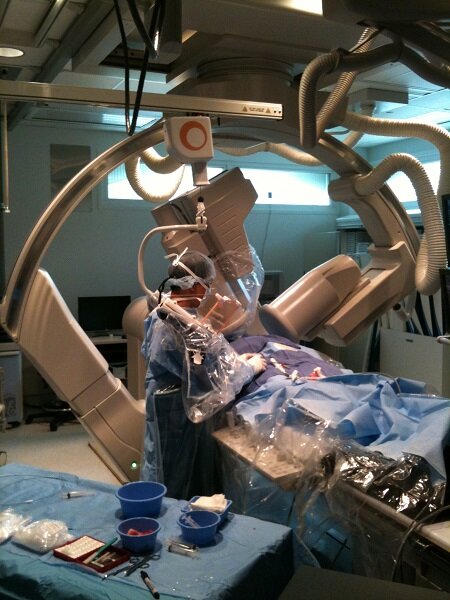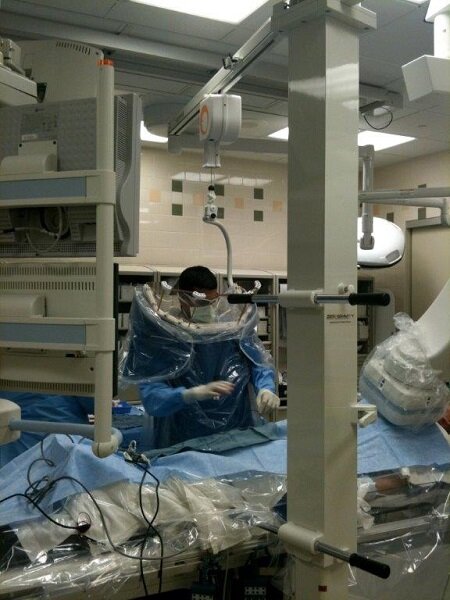Zero-Gravity™

- Main
- Configurations
- Applications
- Administrator's Guide
- Resources
- Trade Shows & Events
- Request A Demo
- FAQ
Suspended Radiation Protection

Brochure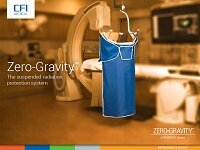 Download |
Compare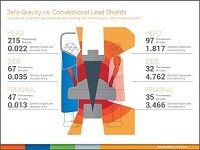 Download |
Learn more |
| 1 C. Savage, T. Seale IV, C. Shaw, B. Angela, D. Marichal, C. Rees, Evaluation of a Suspended Personal Radiation Protection System vs. Conventional Apron and Shields in Clinical Interventional Procedures, Open Journal of Radiology, Vol. 3, No. 3, 2013, pp. 143-151, doi:10.4236/ojrad.2013.33024 | ||

Any room, Any environment
| Zero-Gravity is currently offered in (3) separate configurations that are designed to meet the needs of any environment. Please expand the sections below to view the design, advantages, and specifications of each of them. To download a PDF of all configurations please click here. |
Floor Unit
 Easy to maneuver, the suspended body and head shield can be re-positioned for a broad range of procedures and room configurations.Allows up to 43″ (109 cm) of working boom arm length for the user. The leveling feet stabilize the unit for procedures, while casters allow safe and convenient movement for optimal set-up. When not in use, the system can be easily stored to the side of a room. |
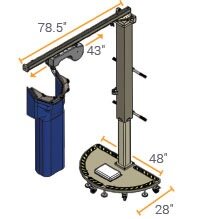
SpecificationsOverall operating height: Floor base assembly: Suspended weight: Overhead boom arm: Leaded face/head shield: Leaded shoulder/body shield: |
Monorail
 This design can carry more than one Total Body Shield from the ceiling, leaving the room’s floor layout unaffected.Zero-Gravity glides out of the way and can be stowed when not in use. Offered in one size: Monorail 48″ for access to one side of the table This size complements biplane C-arms, ceiling-mounted C-arms, floor-mounted C-arms and ceiling-mounted tracks. |
SpecificationsLeaded head shield: Leaded shoulder/body shield: Suspended weight: System must be mounted on a ceiling strut system (P5001 or equivalent) or on ceiling support plates. |
Monorail Hinged Swing Arm
 Maximum patient access is accomplished with this design that features a ceiling-mounted track with a trolley-mounted swing arm and a lower boom arm. It provides 360° positioning of the Total Body Shield and 90” reach to both sides of the table.Supports multiple Zero-Gravity Systems Complements biplane C-arms, ceiling-mounted C-arms, floor-mounted C-arms and ceiling-mounted monitor tracks. Zero-Gravity glides out of the way and can be stowed to the side when not in use.Download PDF |
SpecificationsLeaded head shield: Leaded shoulder/body shield: Suspended weight: System must be mounted on a ceiling strut system (P5001 or equivalent) or on ceiling support plates. |
Efficient & Effective
|
Zero-Gravity can help improve efficiency and effectiveness of treatment by protecting clinical staff from workplace hazards.
Unimpeded PATIENT ACCESS Poorly designed laboratory environments promote awkward and ergonomically unsound postures.1 Zero-Gravity offers clinicians freedom of movement, especially during challenging procedures. Designed for IMPROVED WORKFLOW Lightweight aprons are frequently shown to provide inferior protection with results counter to the apron labels. Zero-Gravity allows operators to perform procedures without potentially obstructive shields.2 |
Introduction Sterile Cover Working with devices Cardiac ablation |
| 1 Lloyd W. Klein, Donald L. Miller, Stephen Balter, Warren Laskey, David Haines, Alexander Norbash, Matthew A. Mauro, James A. Goldstein, Occupational Health Hazards in the Interventional Laboratory: Time for a Safer Environment, Radiology, Feb. 2009, Vol. 250, No. 2:538–544, doi:10.1148/radiol.25020825582 C. Rees MD FSIR. (2012, Dec., 28) Beware the “Lightweight Lead Apron.” Retrieved from http://www.interventco.com/blog/2012/12/28/beware-the-lightweight-lead-apron/ | |
Greater Care for Our Caregivers
Stop accepting excessive doses of radiation and the skeletal burden of protective apparel. Hospitals can’t afford not to create a safer working environment for their most valuable resource—clinicians.Clinicians working with fluoroscopy are predisposed to orthopedic injuries resulting from the cumulative adverse effects of bearing the weight of personal protective apparel.1 Any radiation dose carries with it an associated risk of cancer induction, and the risk increases linearly with increasing dose.1Avoid the risk of down-time due to work place injuries. Zero-Gravity reduces fatigue and orthopedic injuries resulting from routinely wearing heavy protective apparel while improving radiation protection. All while enhancing the morale of your most valuable team members, “Happy doctors make happy patients.” 2Create a safer cath lab at your facility; let Zero-Gravity take the weight off your clinicians’ shoulders, so they can practice as long as they choose without pain.
|
An Administrator’s Perspective David Patterson An Administrator’s Perspective Janice Froelich A Physician’s Perspective Matt Sackett, MD A Physician’s Perspective Andre Gauri, MD A Physician’s Perspective Israel (Hebrew) A Nurse Manager’s Perspective Carol Cisney, RN |
| 1 Lloyd W. Klein, Donald L. Miller, Stephen Balter, Warren Laskey, David Haines, Alexander Norbash, Matthew A. Mauro, James A. Goldstein, Occupational Health Hazards in the Interventional Laboratory: Time for a Safer Environment, Radiology, Feb. 2009, Vol. 250, No. 2:538–544, doi:10.1148/radiol.25020825582 Jan Froelich, Director of Cardiovascular Services, Bradenton, FL, Administrator’s Perspective. | |
| Document | Description | Link |
|---|---|---|
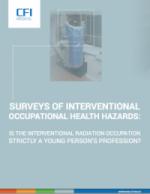
|
Survey of Interventional Occupational Health Hazards – Is the Interventional Radiation Occupation Strictly a Young Person’s Profession? | Download |
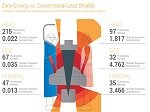
|
Zero-Gravity vs. Lead Aprons – Comparison of operator eye exposures when working from femoral region, side or head of patient. | Download |

|
Evaluation of a Suspended Personal Radiation Protection System vs. Conventional Apron and Shields in Clinical Interventional Procedures. | Download |

|
Clinical Evaluation of the ZeroGravity Radiation Protection System for Interventionalists. | Download |

|
Learn how taking care of our clinicians is the key to unlocking a better quality of life in the new era of healthcare. | Download |
| Videos | |
|---|---|
|
Dr. Ricardo Yaryura Cardiologist, Sarasota Memorial Hospital |
Executive Director Cardiovascular & Surgical Services, Sarasota Memorial Hospital |
|
Clinical benefits of a unique suspended radiation protection system. |
Overview of potential savings from Zero-Gravity by keeping clinicians healthy and practicing. |
|
Dr. Kenneth Bilchick Electrophysiologist, University of Virginia |
Dr. Aylmer Tang, MD Cardiologist, Chambersburg, PA |
|
Dr. Jeffrey R. Rubin, Vice President, CVI Chief, Vascular Surgery – DMC, Detroit, Michigan |
A suspended radiation protection unit |
| Trade Show | Location | Dates |
|---|---|---|
|
RSNA 2015 (Booth 7700) |
Chicago, IL | November 29 – December 4, 2015 |
|
ISET 2016 |
Hollywood, Florida | February 8 – February 10, 2016 |
Is sterility maintained when an operator moves in and out of Zero-Gravity multiple times during any given procedure?
Yes, assuming the operator observes accepted sterile technique protocol throughout the procedure. The Zero-Gravity cover has been validated in accordance with ISO 11135, and the product packaging has been validated in accordance with ISO 11607.
Once the Zero-Gravity is sterile draped, can I grasp the the adjustable engagement point in the chest area to fit a different height and still maintain the sterile field?
Yes, assuming the operator observes accepted sterile technique protocol while gathering the sterile cover in an upward motion, pinch both sides of the adjustable engagement point and slide to the desired position. Release the sides and the engagement point will maintain its position.
What is the life expectancy of a Zero-Gravity Radiation Protection System?
Given the robust design, and assuming proper care per manufacturer recommendations, the unit should far exceed the useful life of a conventional lead apron.
What are the parts, if any, that I should expect to replace over time?
Assuming proper care per manufacturer recommendations, there are no parts that should need to be replaced.
Will my BioMed Department need to check and maintain the Zero-Gravity unit?
It is not necessary to engage facility BioMed Dept, however CFI Medical defers to facility protocol. Should a mechanical need arise, your BioMed Dept may be able to respond more quickly than the service personnel to simple adjustments.
Can you provide a list of accounts that are using Zero-Gravity?
CFI Medical will review a list of users with you and connect you to the facility(s) you wish to speak with.
Why is there an 8 to 12 week lead time to produce a ceiling unit?
Each room layout is somewhat unique. To properly fit the Zero-Gravity system into your lab, we must create and manufacture a system to conform to your site-specific needs for ceiling collision avoidance.
Can you reduce the weight of the Floor Unit in order to make it easier to position and set up?
All Zero-Gravity systems are designed with patient and operator safety in mind. The weight of the Floor Unit base is necessary to provide safe and secure use. The industry standard for movable equipment is to require less than 45 lb of force to move the unit. The Zero-Gravity Floor Unit only requires 31 lb of force to start moving it and 21 lb of force to continue moving it.
Is it possible to have multiple Zero-Gravity shields in one room?
Yes, there are several options for suspending multiple shields in one room. The Monorail and Contour Track systems can easily accommodate multiple shields. Additionally, other configurations can be combined to accommodate specific needs. Please contact CFI to discuss specific needs.
What about protecting my back from radiation?
Radiation travels in a straight line. Typical cath lab practice is to watch the monitors which are positioned on the opposite side of the table. In this orientation, the shield is well positioned between the radiation source and the operator when fluoro is activated. In this configuration the operator is extremely well protected in the front as well as the back. When the operator is no longer using fluoro, the shield can be disengaged without breaking sterility and the operator is able to perform non-fluoro related tasks without their lead apron or the Zero-Gravity.
In a multi Zero-Gravity unit installation, what about protecting the back of the other staff?
Both operators should be facing the monitors while fluoroscopy is activated. This will promote achieving optimal protection for the front and back of each operator. If the procedure requires the secondary operator that is not controlling fluoro to turn away from the table during the procedure, the Zero-Gravity should be disengaged and spread opened to create a broad shield. The secondary operator should return to the body shield, re-engage, close the body shield, and continue the procedure in a table facing position.
Can you provide evidence regarding Zero-Gravity radiation protection as compared to traditional methods?
Yes, simply fill out the form on the main tab to receive detailed information on Zero-Gravity radiation protection.
 The growth in utilization and complexity of fluoroscopic procedures has increased workload for interventionalists, resulting in cumulative radiation doses and orthopedic strains that can be limiting or career ending.1 Experience Zero-Gravity—the suspended radiation protection system that provides greater protection, resulting in healthier, happier clinicians.
The growth in utilization and complexity of fluoroscopic procedures has increased workload for interventionalists, resulting in cumulative radiation doses and orthopedic strains that can be limiting or career ending.1 Experience Zero-Gravity—the suspended radiation protection system that provides greater protection, resulting in healthier, happier clinicians.

